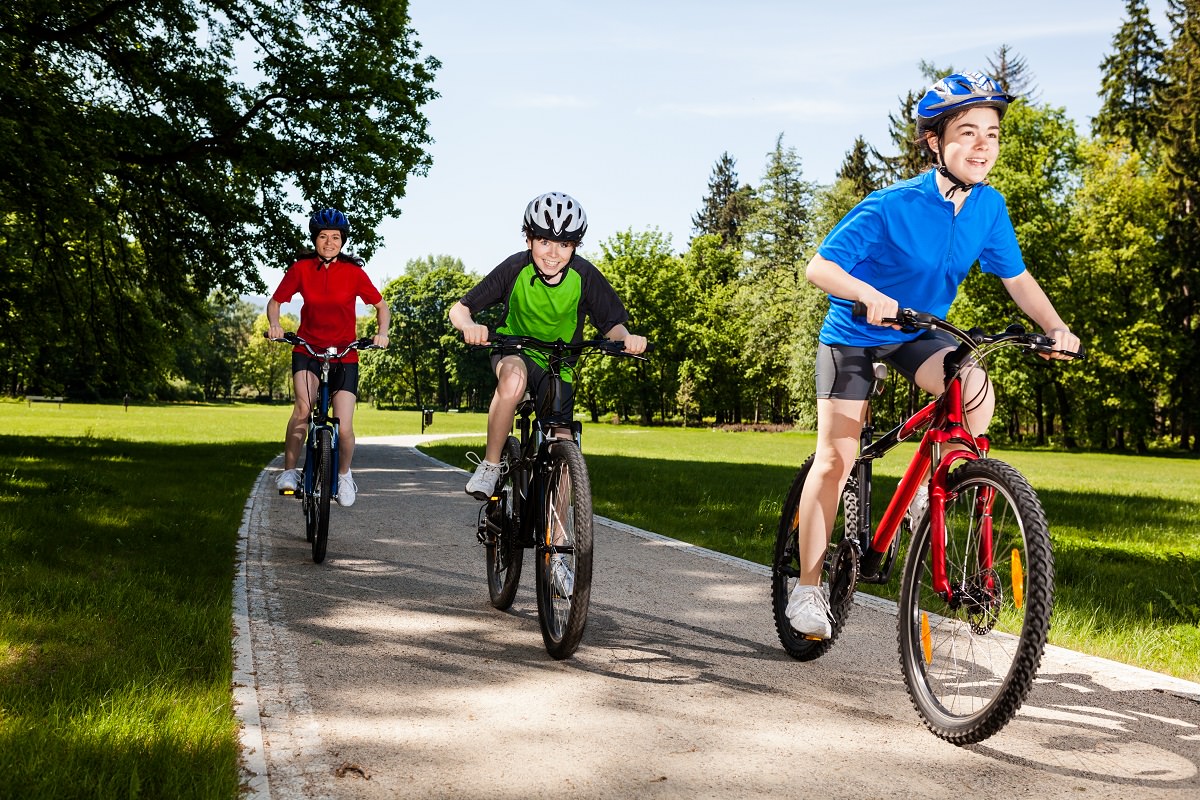
The places and communities that we live in play an important role in our physical health. What we have access to on our doorstep is important to motivating – or preventing – our physical activity levels. This is especially the case for young people, who are less able to travel outside the community in which they live. Given that being active during our childhood and teenage years can affect our health even in adulthood, it’s important that teens are able to exercise near where they live.
We wanted to understand how where teenagers live influences their activity levels and fitness. We used mapping via Geographic Information Systems (GIS), and compared it against baseline data on teenage activity levels to understand how active teens are in different communities.
We also collected data on physical activity with accelerometers (which showed us how many minutes teenagers spent active either at low, medium or high intensities, or being sedentary), fitness levels with the Cooper Run Test (a 12-minute walk/run test when teenagers try and complete as many laps of their school sports hall), and blood pressure levels. We also monitored exercise motivation with a questionnaire.
We explored how the distance from a young person’s home and school to leisure centres or active travel infrastructure (such as footpaths and cycle paths), as well as distance from public transport and natural spaces (including parks and woods) affect activity and fitness levels. We found that teenagers often need to travel from home to be active and that green space near schools increases activity levels. We also discovered that teens from more deprived neighbourhoods are fitter.
Physical activity and fitness
Our research showed that teenagers (especially girls) were more active if their homes were closer to public transport. This might be because those living near transport links may not have a car. It might also indicate teens are willing to travel to do things they like, or that they get more activity while travelling to school or to see friends.
But being able to travel to physical activities doesn’t lessen the importance of local opportunities. Creating opportunities to be active within a community can improve fitness levels, and may be more accessible to people who might not be able to afford public transport.
We also found that teenagers performed better on the Cooper Run Test if their school was closer to green spaces. Schools near green spaces may be able to provide better, more active PE classes and outdoor breaks for students. Green space may also facilitate outdoor, active learning. All of these may improve overall fitness.
Green spaces near schools may also provide a safe place for young people to cycle, or spend time with friends after school. Schools with better access to natural spaces may also be in less urban areas, thus further away from high traffic areas. Having a safe area to be active is likely to allow young people to be more independent in their community.
Our findings also show that improving activity and improving fitness are not intrinsically linked, in that time spent sitting or lying down increases as physical activity does. This is especially the case with boys. It might be that teens who take part in structured, competitive sports may also have high periods of inactivity outside formal training periods. They perhaps feel they need to rest in between. So being active in this way may not mean that teenagers are fitter.
This would suggest that we should promote different types of activity (such as walking and yoga), which benefit both cardiovascular health and fitness, and may get teens moving outside of structured activities. Improving access to a variety of activities within the community will promote physical activity and improve health.
Another finding from our study was that teenagers from more deprived areas are more fit – especially teenage girls. Despite being less likely to participate in structured activities, such as competitive sports, it may be that teens from less afluent areas are active out of necessity – such as needing to walk or cycle to school.
With this in mind, communities should focus on promoting and maintaining active travel and infrastructure, such as cycle paths, pavements and car-free zones. Creating affordable opportunities for activity and giving teens a space to spend time with their friends locally may also continue to improve fitness levels.
The key findings of our research are important to consider. Our research shows which activities teens use to keep fit, and which factors influence their fitness levels. These findings might inform communities and help them create more opportunities to be active other than through travel. Creating more places locally for young people to live, play, and connect with friends and family might be one way communities can create more opportunities for teens to be active.
Our research also revealed the extent to which the school setting affects teenagers’ activity levels. What we found suggests that schools should be used as a hub for the community in order to improve fitness. Currently, school grounds are underused for play and physical activity when the teaching day ends. For teenagers, who are often less physically active, having a space for after-school activities is essential for improving fitness levels.
Being physically active from a young age can create lifelong habits that can prevent against poor health later in life. Creating more opportunities for activity within our communities will improve health for all.
This article was originally posted on Fitness levels in teenagers linked to where they grow up – new research